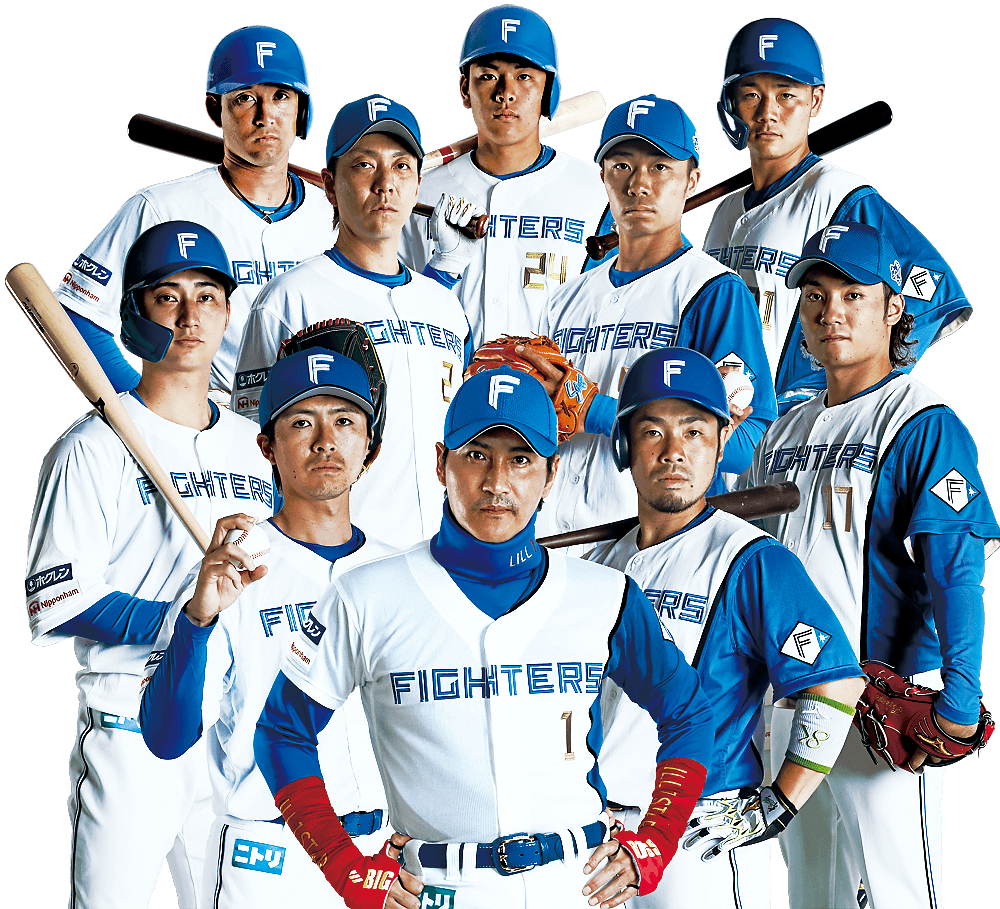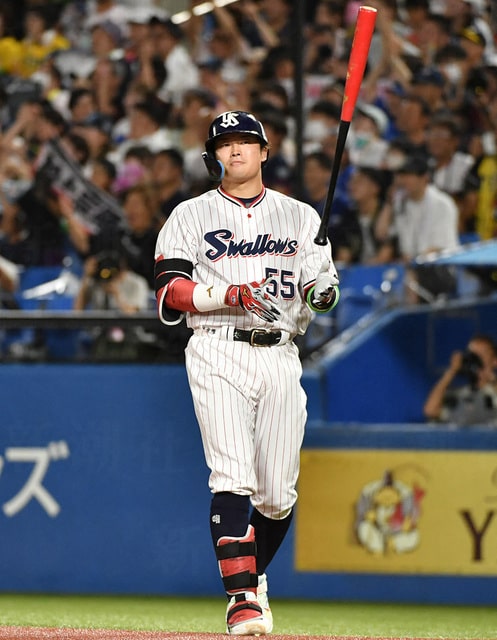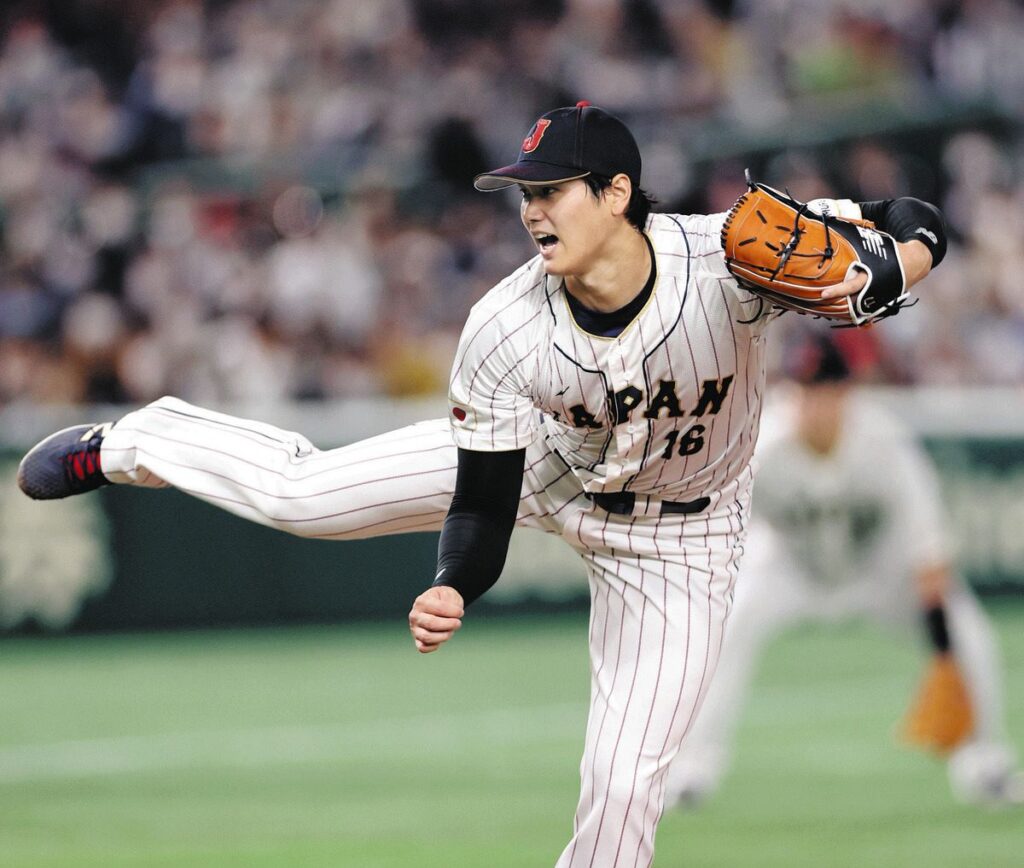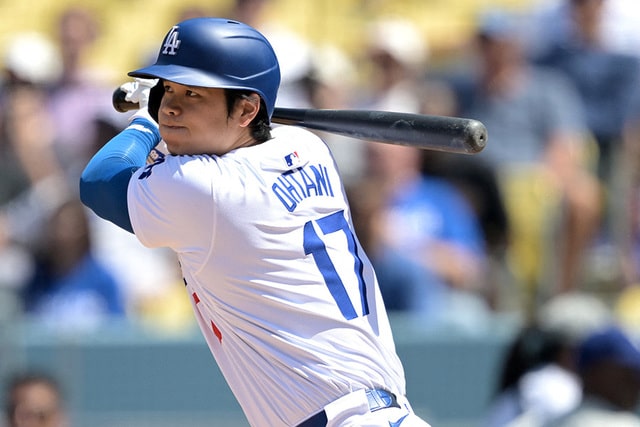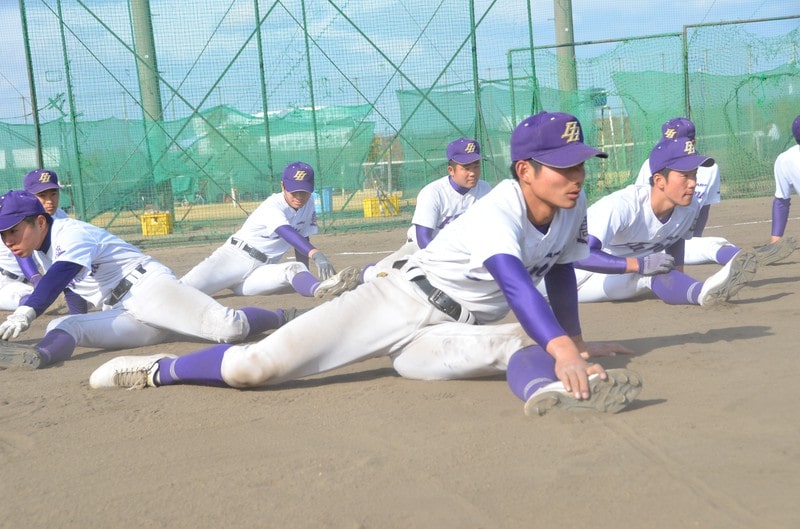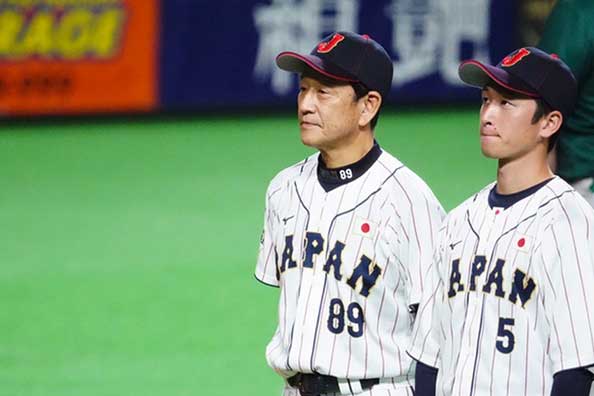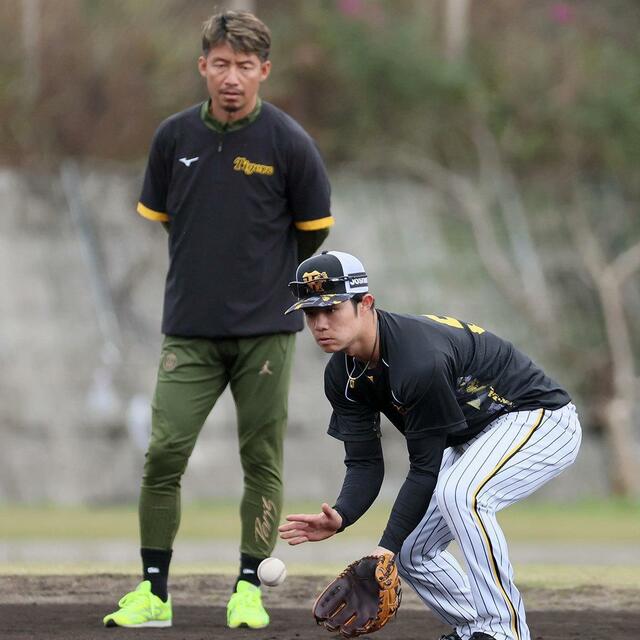
The number 6 in baseball is known as an important number, especially for a shortstop.
The players who wear this number support their team with their outstanding defensive and hitting ability.
Historically, many great players have worn this number and captivated fans with their playing style and leadership.
This article takes a closer look at the history and characteristics of the number 6 jersey, iconic players, its role at each position, and its future.
Let’s understand the significance of the number 6 by re-evaluating how players who wear it contribute to their teams and the meaning and value behind it.
目次
Basic information about number 6
The number 6 is often worn in baseball by the shortstop position, a crucial position in defense.
Below, we take a closer look at the history of the number 6 jersey and some of the iconic players who have worn it.
History and tradition of the number 6
The number 6 is a number with a long tradition in baseball history.
This award is often given to shortstops, who have played a central role in the defense.
The shortstop is located in the center of the infield and is a position that requires wide defensive range and high throwing accuracy.
This number began to be used frequently for shortstops after the 1950s, as players with excellent defensive ability and mobility were chosen to play the position.
As a result, the number 6 gradually came to be recognized as a symbol of a skilled defender.
Traditionally, the shortstop provides leadership on the field and also takes command of the defense.
As a result, the number 6 became more than just a number; it also symbolized the player’s role as a leader in leading the team’s defense.
Famous players who have worn the number 6
The great players who have worn the number 6 have had a huge impact on the baseball world with their outstanding defensive and hitting skills.
Below, we look at some iconic players.
Derek Jeter
Derek Jeter of the New York Yankees is one of the players who symbolizes the number 6. Jeter supported the Yankees’ golden era with his outstanding defensive skills and leadership. His career is marked by numerous Gold Glove Awards and Silver Slugger Awards. His performance in the playoffs in particular is deeply etched in the memories of baseball fans.
Ozzie Smith
, nicknamed “The Magician,” was another great player who wore the number 6. Smith, who played for the St. Louis Cardinals, captivated many fans with his brilliant defense and agile movements. Smith won 13 Gold Glove Awards, proving his defensive prowess.
Alex Rodriguez
Alex Rodriguez is another player who has worn the number 6 and is also known for his hitting ability. Rodriguez began his career as a shortstop and later moved to third base, but was able to demonstrate both offensive and defensive abilities at any position.
These players have elevated the value of the number 6 jersey and built its tradition.
Their playing style and leadership continue to have a major impact on the next generation of players.
In the next section, we’ll take a closer look at the number 6 jersey position.
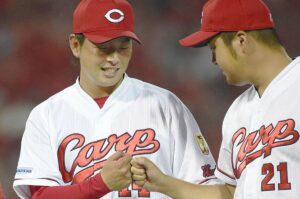
Number 6 position
The number 6 is known in baseball as the number that primarily represents the shortstop position.
The shortstop is located in the center of the infield and plays a vital role in the defense.
Below we will go into more detail on his role as a shortstop as well as examples of his use at other positions.
Role as shortstop
The shortstop is a central defensive position that requires a wide range of coverage and strong defensive ability.
The shortstop, who wears the number 6 jersey, has the following duties:
1. Wide defensive ability
Shortstops must cover a wide area on both sides to protect the center of the infield. They must be agile and react quickly, and it is important to be able to handle hard hits and difficult-to-bounce grounders. This increases the chances of getting an out on a hittable ball.
2. Relay for double plays
The shortstop plays an important role in making a double play. He must throw the ball to second base and then to first base quickly and accurately. As the relay for this team play, the shortstop’s throwing technique is put to the test.
3. Defensive Leadership
The shortstop also plays the role of a leader for the defense. He is expected to coordinate with the infielders and outfielders and direct defensive shifts and movements. In particular, it is important to coordinate with the pitcher and adjust positioning according to the situation of the game.
4. Strong arm and throwing accuracy
Shortstops need strong arms and high throwing accuracy. In particular, they need to be able to throw accurately to first base from a long distance, so shoulder strength and a stable throwing form are important. This increases the chances of getting the runner out.
Examples of use in other positions
The number 6 is primarily worn by shortstops, but can also be worn at other positions.
Below are some examples of the number 6 being used in other positions:
1. Second Baseman
In some teams, the defensively strong second baseman wears the number 6. The second baseman also plays an important role as the core of the infield defense, and like the shortstop, he is expected to play double plays and perform defensive shifts.
2. Third baseman
Sometimes the third baseman wears the number 6. The third base is also called the hot corner and is a position that needs to respond to hard hits. Because it requires a strong arm and quick reaction time, players wearing the number 6 sometimes play in this position.
3. Outfielder
On rare occasions, outfielders may wear the number 6. Outfielders who wear the number 6 contribute to their team with their strong arms and wide defensive range. They are mainly used in positions where defensive ability is important, such as center field and right field.
The number 6 is primarily associated with the shortstop role, but its importance is also recognized at other positions.
In the next section, we’ll take a closer look at the defensive attributes of shortstops.

Shortstop defensive traits
The shortstop plays a vital defensive role in baseball.
His defensive attributes include great range, agility and precise throwing technique.
Below, we’ll take a closer look at the specific defensive traits of shortstops.
Wide defensive range and agility
A shortstop must cover a wide range of territory.
Players in this position need to have good agility and reaction time.
1. Wide defensive range
The shortstop is located in the center of the infield and covers a wide area from left to right. This means he needs to be able to cover balls hit between third base and second base, and even balls from left field. A player with a wide defensive range can get more hits for outs, greatly improving the defensive strength of his team.
2. Quick Reactions and Agility
Quick reactions and agility are essential for a shortstop. Quick reactions and movements are required to deal with hard hit balls and erratic bounces. This allows him to handle difficult hits and make outs.
3. Explosiveness and foot speed
: Shortstops also need the explosiveness and foot speed to get out of their defensive position quickly and reach the ball. Players with a wide defensive range use these abilities to make difficult plays.
Accurate throwing technique
Accurate and powerful throwing technique is also important for a shortstop.
This allows for a smooth transition from defense to offense.
1. Strong Arm
Shortstops need a strong arm to throw the ball from a long distance to first base with accuracy. Throwing from a deep position requires strong arm strength. A player with a strong arm can throw the ball to first base stably, increasing the chances of making an out.
2. Accurate Throwing
Shortstops must have not only a strong arm, but also accurate throwing techniques. In particular, quick and accurate throws to second base are required for double plays. Accurate throwing is directly linked to defensive success.
3. Form Stability
A stable throwing form is also important. A shortstop needs to be able to throw accurately from different positions and movements. Body balance and throwing mechanics play a big role in this.
The shortstop position is played by a player who combines a wide defensive range, agility, and accurate throwing technique.
These attributes improve a team’s defensive strength and can have a significant impact on the outcome of a match.
In the next section, we’ll take a closer look at the offensive power of the number 6.
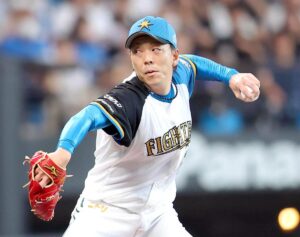
The offensive power of the number 6
The shortstop, who wears the number 6 jersey, contributes greatly to the team not only defensively but also offensively.
Their hitting power, speed and base running skills are key factors that directly affect the outcome of a game.
A powerful shortstop
The player wearing the number 6 is expected to demonstrate high batting ability.
1. Power and Contact Hitting
Powerful shortstops have both power hitting and contact hitting. They have the power to hit long balls and produce a lot of extra base hits such as home runs and doubles. At the same time, they have a high ability to make contact with the ball reliably, and they maintain their batting average by making hits.
2. Role as a cleanup hitter
In many teams, it is common to have a powerful shortstop as part of the cleanup hitters. This increases scoring opportunities and improves the team’s offensive power. As a cleanup hitter, he is expected to advance runners into scoring position and to bat in situations where scoring is possible.
3. Pressure-resistant hitters
Many shortstops are also good at hitting under pressure. They are required to have the ability to produce results at key moments in the game, making them a reliable presence for their team. This allows them to hit important hits that change the flow of the game.
Base running and speed
Shortstops need not only good defense and hitting skills, but also base running skills and speed.
1. The Importance of Speed
Many shortstops have excellent speed. Running after reaching base can put pressure on the opposing defense, creating opportunities to target additional bases. Speed is a major weapon, especially when stealing bases or hitting extra bases.
2. Excellent base running skills
Base running skills are also important for shortstops. When running the bases, they need the judgement to advance to the next base at the right time and the skill to minimize the risk of being out. This increases the chances of getting a runner into scoring position.
3. Overall Mobility
Shortstops need overall mobility on the offensive side as well as a wide defensive range. Quick running after reaching the base and speed when switching from defense to offense will raise the offensive power of the entire team. A shortstop with overall mobility is a big threat to the opposing team.
Shortstops who wear the number 6 uniform are often players who have comprehensive offensive ability, not only defensively but also hitting power, speed, and baserunning skills.
This increases the team’s scoring ability and has a major impact on the outcome of games.
In the next section, we’ll take a closer look at the leadership of the number 6.

Leadership with the number 6
The number 6 player provides leadership on and off the field and contributes greatly to the team’s success.
Their leadership is important not only in terms of their play but also in gaining the trust and respect of their teammates.
Influence on and off the field
1. Defensive Commander
The shortstop is the key player in the infield defense and is responsible for commanding the other defenders. They adjust their defensive position according to the game situation and direct defensive shifts to maximize the team’s defensive power. As a defensive commander, the player wearing the number 6 always demonstrates calm judgment and leadership.
2. At the heart of the attack
On the offensive side, players wearing the number 6 also play an important role. They are the leadoff hitter or cleanup hitter, and are highly regarded for their performance under pressure. As the heart of the attack, players wearing the number 6 are game-changers.
3. Mental Support
Off the field, the number 6 provides mental support to their teammates. They mentor younger players and act as a nerve-wracking agent before and during games. Mental support is a key factor in boosting morale throughout the team.
Trust and respect from teammates
1. Sharing experience and knowledge
Number 6 players share their wealth of experience and knowledge with their teammates. They impart tactics and tips on how to play depending on the situation of the match, contributing to improving the performance of the whole team. The presence of experienced players is a valuable asset for younger players.
2. Consistent performance
To gain the trust and respect of teammates, consistent high performance is necessary. The player wearing the number 6 will earn the trust of his teammates by consistently demonstrating stable defense and batting. He will establish himself as a leader by producing results in crucial moments of the game.
3. Demonstrating leadership
Leadership is important not only in words but also in actions. The No. 6 player takes the initiative in practice and games, setting an example for his teammates. Their attitude and approach have a positive impact on the entire team.
The number 6 player provides leadership on and off the field and contributes greatly to the team’s success.
Their influence and credibility earn them the respect of their teammates and contribute to the overall performance of the team.
In the next section, we’ll take a closer look at the number 6 jersey and its tactical role.

The number 6 and his tactical role
The shortstop, wearing the number 6 jersey, plays a tactical role as the center of the team’s defense.
They will be required to give instructions on defensive shifts, play together as a team, and make tactical decisions during the match.
Specific tactical roles are described below.
Defensive shifts and teamwork
1. Defensive shift instructions
The shortstop is responsible for instructing defensive shifts according to the tendencies of the opposing batter and the situation of the game. He adjusts his own and the other infielders’ positioning, taking into account the batter’s batted ball direction and the pitcher’s pitching tendencies. This allows him to efficiently handle batted balls and increase the chances of getting an out.
2. The center of teamwork
As the center of teamwork, the shortstop is required to cooperate with the other infielders. In particular, when making a double play, it is important to work in sync with the second baseman. By making quick and accurate throws, you can move the game in your favor.
3. Defensive communication
The shortstop communicates frequently with the pitcher and catcher during the game. Based on the pitcher’s pitching plan and the catcher’s signs, he fine-tunes his defensive position and maintains the optimal defensive posture. This communication is important to strengthen defensive coordination and shut down the opponent’s attack.
Tactical decision making during the match
1. Situational Judgment
Shortstops make quick situational judgments according to the progress of the game. For example, if there is a runner, they must always be aware of his position and movement and select the appropriate defensive action. This allows them to execute the optimal play to shut down the opponent’s attack.
2. Pitching trajectory prediction:
Predict the pitcher’s pitching trajectory and the batter’s swing tendency, and adjust your defensive position to where the ball is likely to land. By making full use of your prediction and judgment skills, you can quickly respond to the batted ball and increase your chances of getting an out.
3. Quick response to teamwork
Shortstops are also required to respond quickly to teamwork during games. For example, when dealing with bunts or ground balls, cooperation with the second and first basemen is key. Quick decisions and actions control the flow of the game.
4. Calm judgment under pressure
Even in important situations or under pressure, you need to be able to keep a calm mind. Shortstops are often entrusted with plays that directly affect the outcome of the game, so it is important to have a mentality that is strong under pressure. By making calm decisions, you can bring the flow of the game to your own pace.
The shortstop, who wears the number 6 jersey, supports the team by directing defensive shifts, teamwork, and making tactical decisions during the game.
These tactical roles are essential to improving your team’s defensive strength and turning the game in your favour.
In the next section, we’ll take a closer look at the future and evolution of the number 6 jersey.
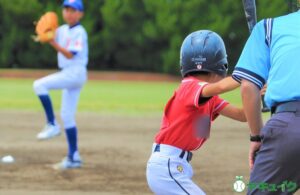
The future and evolution of the number 6
Players wearing the number 6 uniform will continue to play an important role in the world of baseball.
It will be interesting to see how the next generation of players will inherit this number and further evolve it.
The next generation of number 6 players
1. The emergence of new star players
The next generation of players wearing the number 6 are emerging as new stars in the current baseball world. It is expected that young talents who will move from amateur leagues and college baseball to professional baseball will carry on the tradition of the number 6 and create new history.
2. Diverse playing styles
In modern baseball, the diversity of playing styles is increasing, and the next generation of players wearing the number 6 are being influenced by this. Various styles are expressed through the number 6, such as players who are both strong hitters and fast, and players with excellent defensive skills. This diversity brings out new appeal in baseball.
3. Global success
The next generation of players are expected to perform well on the international stage. Performances in international competitions such as the World Baseball Classic (WBC) and the Olympics will further increase the value of the number 6. In particular, players who will be the bridge between Japanese professional baseball and major league baseball will impress fans around the world wearing the number 6.
The evolution of the number 6 in modern baseball
1. Balance between defense and hitting
For players wearing the number 6, a balance between defense and hitting is very important. We live in an age where not only defensive ability but also hitting ability is highly valued. In modern baseball, there are many players with comprehensive abilities, and players are expected to be not only good at defense but also strong hitters.
2. Use of Technology
In modern baseball, technology is being increasingly adopted, and players wearing the number 6 are also benefiting from it. Training using data analysis and video analysis has become common, allowing players to improve their performance more efficiently. This allows players wearing the number 6 to always be in top condition for the game.
3. New training methods
Training methods have also evolved, with modern players incorporating the latest physical and mental training. This has resulted in players who are stronger both physically and mentally, and the number 6 players are greatly influenced by this.
4. Global influence
Players wearing the number 6 have become globally influential through social media and the media. Their achievements are reported around the world in real time, strengthening their connection with fans. This makes the number 6 more than just a team number, but a special number for baseball fans around the world.
The next generation of players wearing the number 6 will continue to make new history.
I look forward to watching their evolution and changes and supporting their success.
